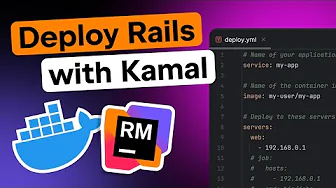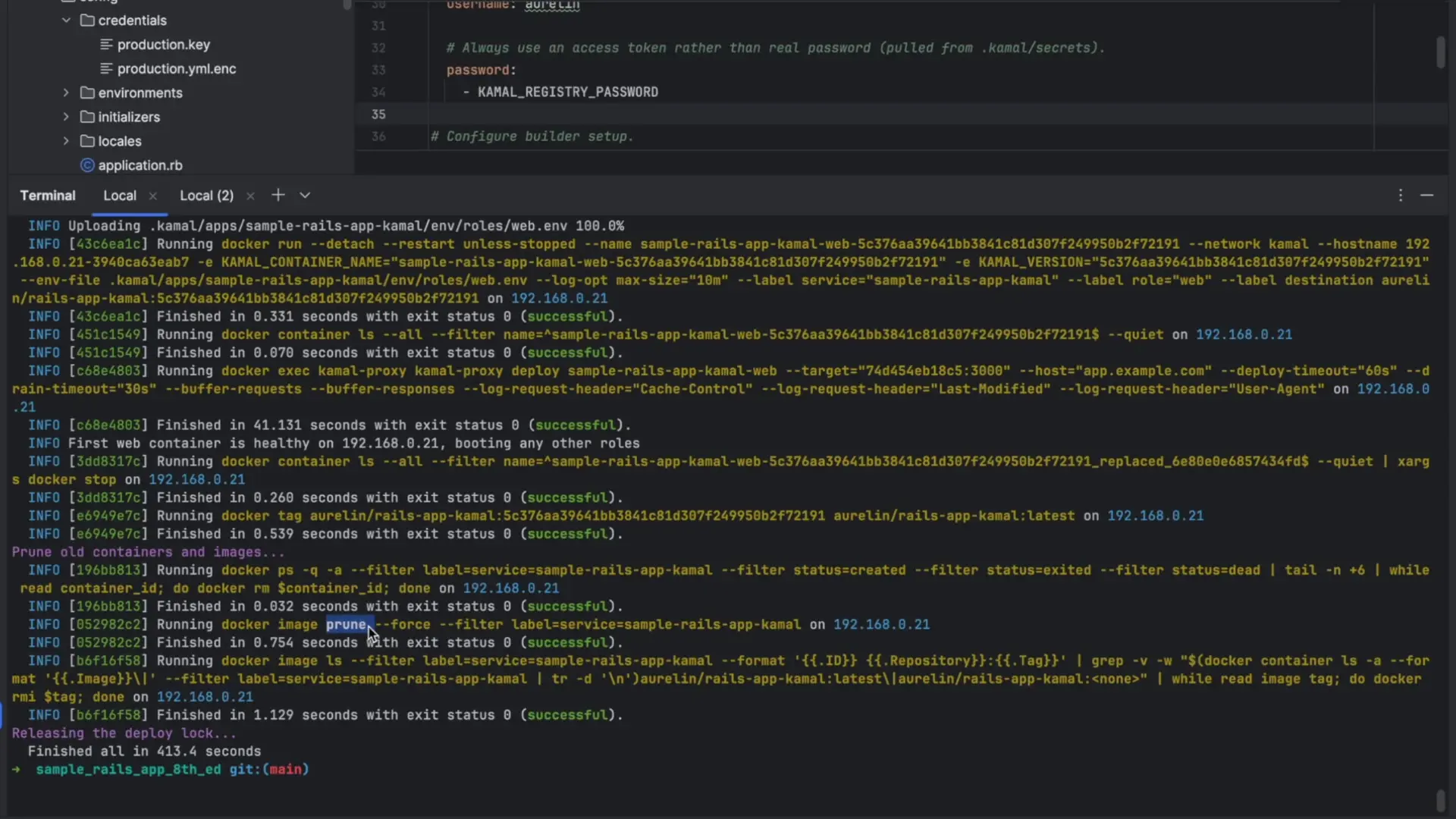
As modern production environments increasingly shift toward containerized solutions, deploying Rails applications has become more sophisticated. Kamal emerges as a powerful deployment solution that simplifies managing Docker-based deployments for Rails applications, offering features like zero-downtime deployments and resource scaling that make it an attractive alternative to traditional deployment methods.
Why Choose Kamal Over Existing Deployment Tools?
With established tools like Heroku and Capistrano already available in the Rails ecosystem, it's reasonable to question the need for another deployment solution. However, Kamal addresses specific limitations of these existing tools while providing a more streamlined approach to containerized deployments.

Kamal vs. Heroku
- Heroku offers simplicity with git-push deployments but becomes expensive as applications scale
- Kamal runs on your own servers or cloud instances, giving you more control and reducing long-term costs
- Kamal provides similar deployment simplicity but with greater flexibility in infrastructure choices
Kamal vs. Capistrano
- Capistrano is a Ruby-based deployment tool that relies heavily on scripting and manual configuration
- Capistrano doesn't natively support Docker or container workflows
- Kamal is specifically built for containerized deployments, offering a more streamlined approach to managing Docker-based applications
Setting Up Kamal for Your Rails Application
Getting started with Kamal requires a few prerequisites. Since Kamal works with Docker under the hood, you'll first need a Dockerfile for your Rails application. Then, you'll need to install and configure Kamal itself.
Installing Kamal
Starting with Rails 8, Kamal comes built into Rails, eliminating the need for manual installation. However, if you're using Rails 7 or earlier, you'll need to add Kamal manually to your Gemfile:
# Add to your Gemfile
gem 'kamal'
# Then run
bundle installInitializing Kamal Configuration
After installation, you'll need to initialize Kamal's configuration in your project. This creates a configuration file in the config directory:
bundle exec kamal initThis command generates a configuration file where you'll specify everything Kamal needs to deploy your application, including server hostnames, SSH configuration, and Docker registry details.
Key Configuration Elements
- Application name: Used to identify your app's containers
- Docker image name: The image Kamal will build from your local application and push to your container registry
- Server addresses: IP addresses of servers you'll deploy to
- Docker registry credentials: Authentication details for your container registry
Deploying Your Rails Application with Kamal
Before deploying, ensure you have a remote server set up and accessible over SSH. Kamal uses SSH to connect to your server and run deployment-related commands, such as pulling images and managing containers.
First-Time Setup
For servers that aren't yet configured for deployment, start with the Kamal setup command:
bundle exec kamal setupThis command will install Docker on the server if it's not already installed, set up the necessary network and volume structures, and prepare your application for deployment. It's designed specifically for first-time setups.
Subsequent Deployments
For subsequent deployments or if your server is already configured, use the kamal deploy command:
bundle exec kamal deploy
The Deployment Process
- Docker builds the image locally using your Dockerfile
- The built image is pushed to your container registry (e.g., Docker Hub)
- On the remote server, Kamal uses SSH to instruct Docker to pull the image from the registry
- A new container is started with the updated image
- Once the new container is running and healthy, Kamal stops the old container
- Old containers and images are pruned to free up space
This process ensures zero-downtime deployments by starting the new container before stopping the old one, maintaining continuous availability for users accessing your application.
Zero-Downtime Deployments in Action
One of Kamal's key features is its ability to handle zero-downtime deployments out of the box. When you make code changes and run the deploy command again, Kamal handles the transition seamlessly:
# After making code changes
bundle exec kamal deployKamal ensures that new containers are up and running before shutting down the old ones, eliminating downtime for users accessing your application during the deployment process.
Rolling Back Deployments
Sometimes deployments don't go as planned. Fortunately, Kamal makes rolling back to previous versions simple. First, you'll need to see what containers are available:
bundle exec kamal app versionsThis command shows all containers, including old ones with their version hashes. Once you identify the version you want to roll back to, use the rollback command:
bundle exec kamal rollback [VERSION_HASH]This stops the current container and starts a new one using the image from the specified version. No new downloads are needed, making rollbacks quick and efficient. By default, all containers are automatically pruned after 3 days when you run kamal deploy, so make sure to roll back before that if needed.
Advanced Kamal Features
Beyond basic deployment functionality, Kamal offers several advanced features that enhance its utility for Rails application deployment:
- Kamal dispatch: Run one-off commands in your production environment
- Kamal entry: Access a shell in your running container for debugging
- Multi-server deployments: Deploy to multiple servers simultaneously
- Environment variable management: Securely handle environment variables
- Health checks: Verify application readiness before completing deployment
Conclusion: Is Kamal Right for Your Rails Application?
Kamal offers a practical and lightweight approach to deploying Rails applications, especially for teams moving away from platforms like Heroku or looking to modernize their Capistrano workflows. With its focus on Docker-based deployments, zero-downtime updates, and simplified server management, Kamal provides a compelling solution for modern Rails application deployment.
If you're looking to reduce deployment costs, gain more control over your infrastructure, or simplify your Docker-based deployment workflow, Kamal is definitely worth exploring. Its integration with Rails (especially in Rails 8+) makes it an increasingly attractive option for teams seeking a streamlined deployment solution.
Let's Watch!
Zero-Downtime Rails Deployment: How Kamal Outperforms Heroku and Capistrano
Ready to enhance your neural network?
Access our quantum knowledge cores and upgrade your programming abilities.
Initialize Training Sequence